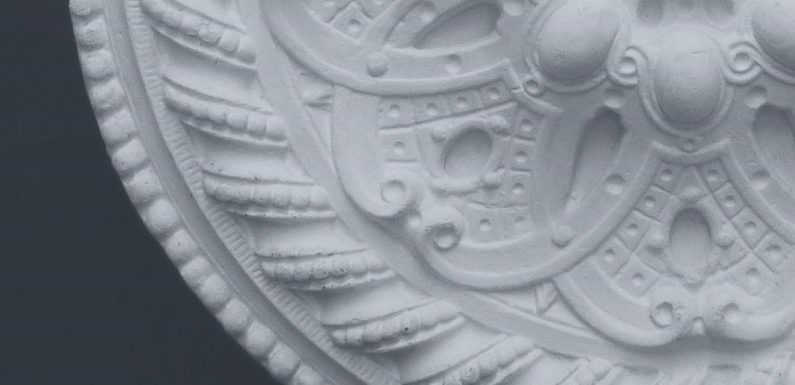
Ceiling roses are an easy and stunning way to add character to a room’s décor, especially if you have existing cornicing or coving which really complement each other.
The first step is to find a design that matches the period of your home and style of light fitting, as there are very many different designs to choose from. Whilst you can mix your styles, if you have a modern light, you probably won’t want to match it with an ornate flowery Victorian ceiling rose. Keep in mind the proportions of the room and also the style of any existing coving. While generally, big goes with high ceilings, smaller with low and plain coving with a simple rose – but this is entirely a matter for personal taste and what looks good in your home.
You will also have a choice of the material. The quickest and easiest to fit is a polystyrene rose, as it’s so lightweight, all you need is a touch of adhesive. However, for something a little fancier, other materials like plastic, brass and wood are also relatively straightforward to attach. The choice of styles available in polystyrene are also more limited, so you may decide to choose a more original plaster design.

Authentic ceiling roses were made from plaster and modern-day replicas of these original designs are also available in plaster which makes them quite heavy. If your design is heavy, contact a professional to have it installed to minimise the risk of injury.
The preferred choice for DIY is hard resin, polyurethane or plastic varieties. These materials are sturdy, easy to fit and lightweight options that can be fixed with glue or screwed in place. Buy ceiling roses at https://www.creative-cables.co.uk/2648-ceiling-roses The most secure fixing is screwing the fitting into the joists above. So as not to ruin the neat finish of the ceiling rose, screws can be countersunk and then filled over which also gives the adhesive time to set fully.
When fitting a ceiling rose, moving the electrical ceiling rose is often required and if you’re not confident doing this, always hire a qualified electrician to come and do it for you. It can sometimes be possible to fit the rose over the electrical ceiling rose however; this is not recommended as you will be unable to access the wires easily if there is a fault with the light at any point.

You could choose to have an electrician fit a junction box above the light, such as in the loft, which would negate the need for an electrical ceiling rose. However, again you will have an access problem if there is a future issue. Should you wish to leave the electrical rose in situ, you’ll need to choose a ceiling rose with a hole in the centre, simply slotting over the electrical one.

